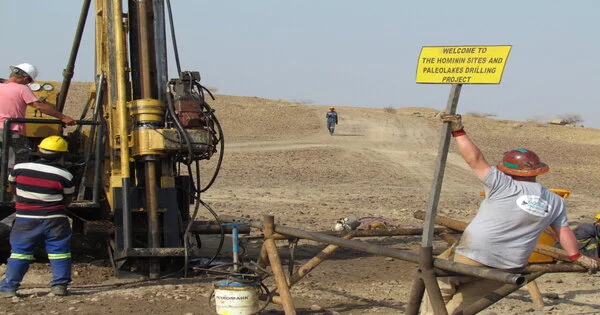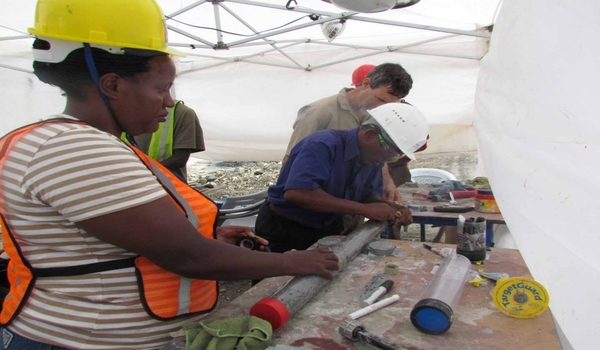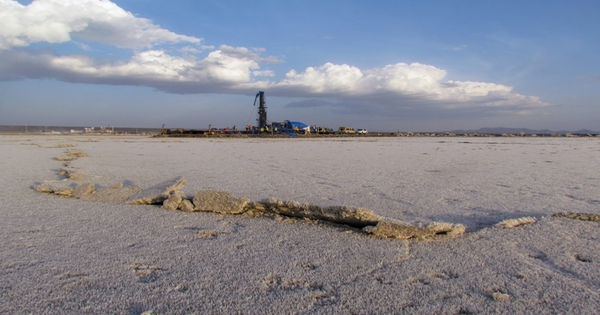A new study combining climate data with fossil records of large mammals that lived across Africa over the last 4 million years calls into question a long-held hypothesis that repeated climate shifts were major drivers of evolutionary change in mammals, including human ancestors.
The study, which was published in the journal Proceedings of the National Academy of Sciences, provides an African continent-wide synthesis of environmental variability during the Plio-Pleistocene, a period in Earth’s history that spans roughly the last 5 million years and includes the last ice age, which occurred about 20,000 years ago.
The study also discovers that changes in the Earth’s orbit and orientation with respect to the sun during that time mirror changes in the Earth’s orbit and orientation with respect to the sun, as predicted by Milankovic cycles, a natural phenomenon. These cycles subject our planet to varying levels of solar radiation, resulting in well-documented cyclical effects on the Earth’s climate at different frequencies.
Due to changes in global ice volume and ocean temperature, the researchers discovered a long-term trend of increasing environmental variability across Africa. The findings, however, did not reveal a significant link between environmental variation and rates of species origination or extinction, implying that environmental variability and species turnover are not necessarily linked, a theory that has sparked heated debate among scientists.
According to Andrew Cohen, a University Distinguished Professor in the University of Arizona Departments of Geosciences, Ecology, and Evolutionary Biology, the idea that long-term trends toward a wetter or drier climate may have been a driver of human evolution dates back to Charles Darwin’s time. In the late 1990s, a major shift occurred when the influential variability selection hypothesis was introduced to the scientific community.
“The idea here is that it’s not just the direction of climate change that was important as a driver for evolutionary novelty in the hominin lineage, but the variability in the environmental and climate conditions, As our ancestors faced rapidly shifting conditions, this hypothesis suggests they had to be more resourceful and capable of dealing with many different contingencies, which, in turn, led to new species appearing while others went extinct.”
Cohen explained
“The idea here is that variability in environmental and climate conditions, not just the direction of climate change, was important as a driver for evolutionary novelty in the hominin lineage,” Cohen explained. Because our forefathers lived in rapidly changing environments, this hypothesis suggests they had to be more resourceful and capable of dealing with a wide range of contingencies, resulting in the emergence of new species while others went extinct.
Researchers analyzed sediment cores from lakebeds, ocean floors, and terrestrial outcrops from 17 locations across the African continent and surrounding areas for the current study. Pollen, fossilized algae, dust, leaf waxes, soil isotopes, and other physical properties that provide clues about the types of vegetation and environmental conditions at the site where they were deposited were used to gather the environmental data. Cohen said the team had to overcome a major challenge in order to combine data from these very different types of records and tease out the underlying pattern of climatic variability: quantifying variability and comparing it from one sampling location to another.

Andrew Cohen/College of Arizona
“This isn’t trivial,” he explained, “because you have records of things like fossil pollen telling you about how variable the vegetation was, others telling you about changing lake levels, and still others telling you about dust blowing out onto the ocean.” “We needed a way to stack all these different types of references that allows us to tease apart the rhythm of variability rather than just looking at one record.”
To do so, the researchers devised statistical methods that allowed them to “compare apples and oranges,” as Cohen put it, and grouped the climate datapoints into “bins” of 20,000, 100,000, and 400,000 years. The team could then “stack” the individual datasets of variability scores in each bin and calculate an average amount of variability for each time period after they had been standardized.
The climate data was then compared to the fossil record of large mammals from eastern Africa, primarily bovids (which includes antelopes and other large herbivores). The researchers focused on large herbivores because human ancestor fossils are too rare to be useful in this study.
“I won’t say you can fit all of (the hominin fossils) in a shoebox anymore,” Cohen said, “but they’re still not that common,” he added. So we decided to look at other organisms with a better fossil record, because there’s no reason to think that only our closest relatives, our hominin ancestors, should be affected by climate change and variability.
“If climate variability is a major driver in evolution, it should be a major driver in the evolution of other large mammals as well,” he added. “Take polar bears, for example, and consider how they are affected by current climate change.”

The researchers used a method borrowed from modern wildlife population biology to account for a bias that has long plagued paleontologists: the fossil record’s inherent incompleteness, as illustrated by Andrew Du, the study’s second author. If a core sample was drilled through cheese, gaps would appear where the core hit a hole in the cheese.
To get around this limitation, Du used a technique called capture, mark, and recapture, which is commonly used by wildlife biologists when conducting population surveys: An animal is caught, tagged, and released back into the wild after being caught. Scientists compare the proportion of tagged and untagged animals in a later survey. They can get an idea of the size and structure of the population as a whole by using statistics.
Du, an assistant professor in Colorado State University’s Department of Anthropology and Geography, explained how the technique works in fossil systems.
“Let’s say we see a new species appear in the fossil record in time period one, then we find a different fossil from the same species in time period two, we miss it in time period three, but we see it again in time period four,” he explained. “This means that, despite the fact that we didn’t see the species in time period three, we know it existed.” This gives us an idea of the quality of the fossil record at different times, and we can account for it when calculating speciation and extinction rates. “
The researchers were able to compare patterns of environmental variability and their relationship to mammal species origination and extinction rates after combining all of these datasets.
Overall, there has been a long-term trend of increasing environmental variability over the last 3.5 million years, he said. “This pattern corresponds to increasing variability in global ice volume and sea surface temperatures in Africa. On top of that, we discovered another trend: as we get deeper into the ice ages, the wiggles get bigger and bigger, reflecting the waxing and waning of the ice sheets, and that variability tracks the 400,000-year Milankovic cycles.
Despite this, the fossil record of species origination and extinction among large herbivores, as well as hominin fossils, appears to be unrelated to climatic variability trends. While the authors acknowledge that the variability selection hypothesis may still be correct at different scales, they hope to encourage scientists to question the hypothesis more critically “rather than just accepting it as an underlying principle of how we look at the fossil record in Africa, and especially the human fossil record,” Cohen said.
“We don’t say that environmental variability isn’t important for human evolution,” he said, “but the data we have right now contradicts that notion.” “We would expect to see that long-term trend of increasing variability mirrored in evolutionary turnover in all kinds of species, including hominins, if environmental variability was as important as it has been made out to be, but we just don’t see that.”





